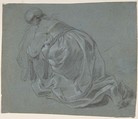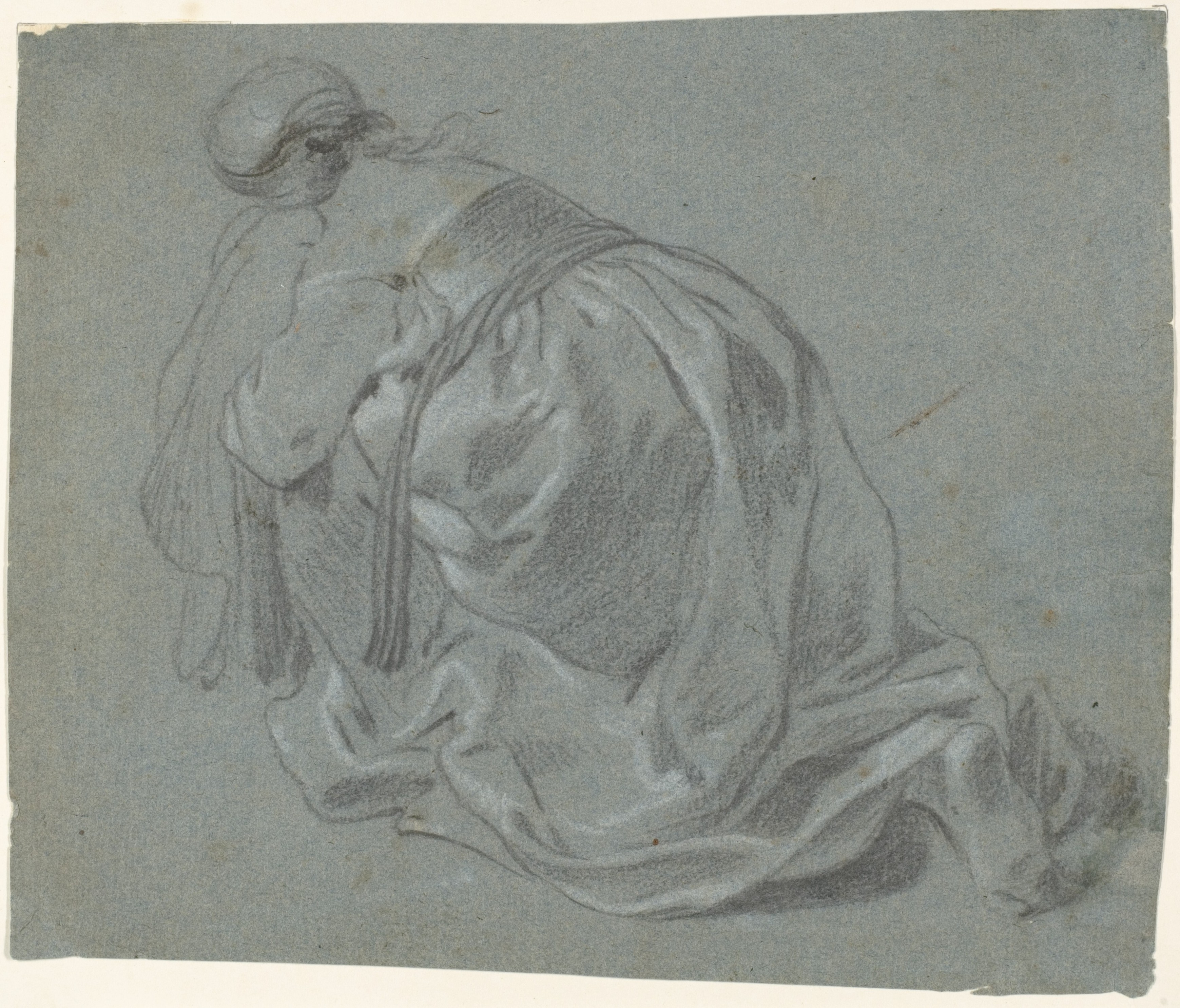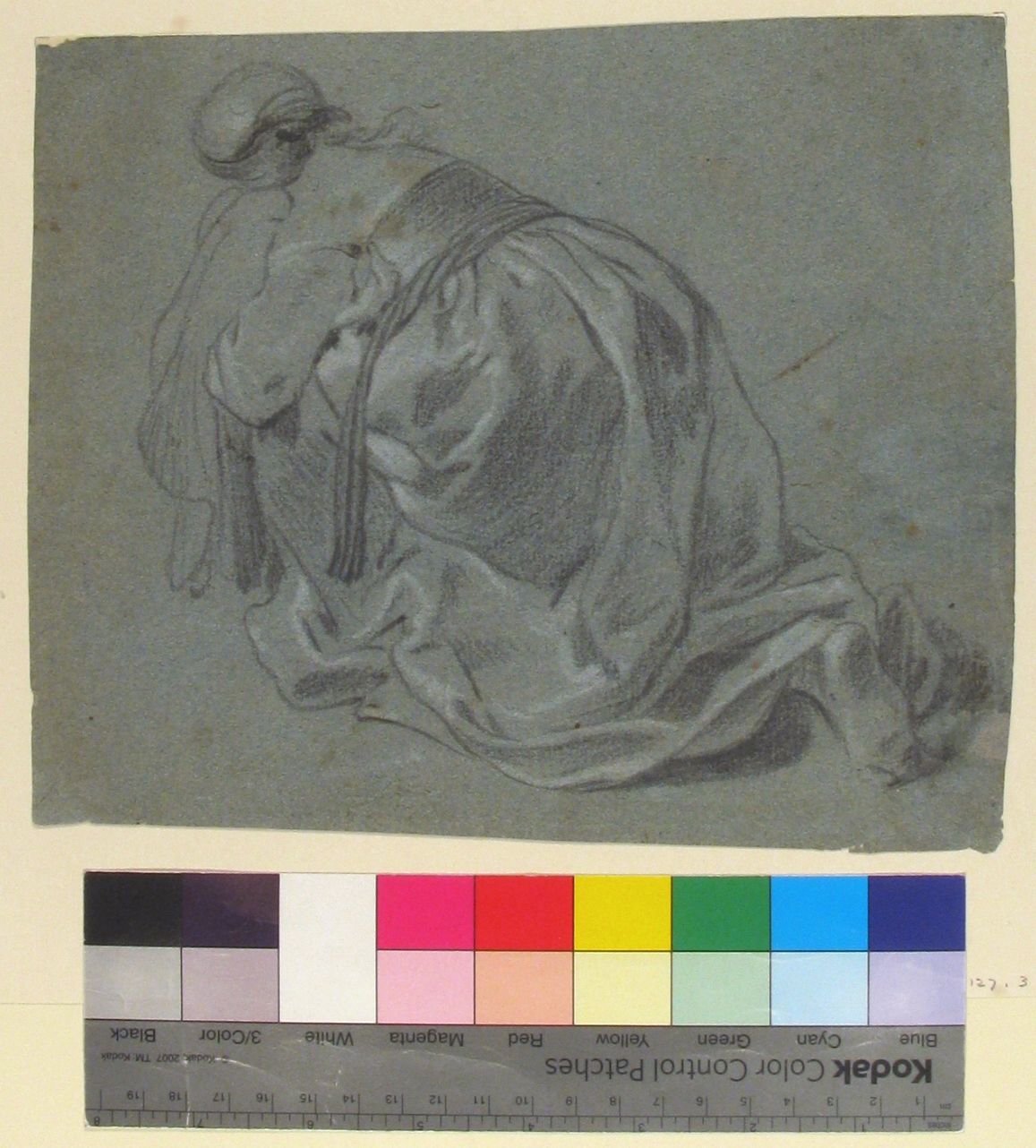Weeping Woman Kneeling, Seen from Behind
Jacob Backer Dutch
Not on view
This chalk sketch shows a kneeling woman in historic dress, bringing a cloth to her face. Like many of his Dutch contemporaries, Jacob Backer made numerous such figure studies in preparation of large scale paintings. This particular figure, in a slightly adjusted pose, was used as a model for Christ and the Adulterous Woman, an oil painting dateable circa 1636.[1]
Backer was a prolific painter of both portraits and works of historic subject matter, active in Amsterdam. Several of his figure studies on blue paper survive, which, it has been thought, were made after live models in workshop sessions, organized together with his colleague Govert Flinck (1615–1660). The artists were well-acquainted, as they were both native to the northern town of Leeuwarden, where they enjoyed their training at the studio of Lambert Jacobsz. (ca. 1598–1636).
Like many of his contemporaries, Backer used blue paper for his figure studies, which allowed the artist to work with the tone of the background and the various colors of chalk to modulate form, thus obtaining better sense of volumes and textures that provided an excellent visual aid when later transforming the motif into a painting.
[1] Jacob Backer, Christ and the Adulterous Woman, c. 1636, oil on canvas, 136 x 202 cm. Private collection, Italy.
Due to rights restrictions, this image cannot be enlarged, viewed at full screen, or downloaded.
This artwork is meant to be viewed from right to left. Scroll left to view more.





